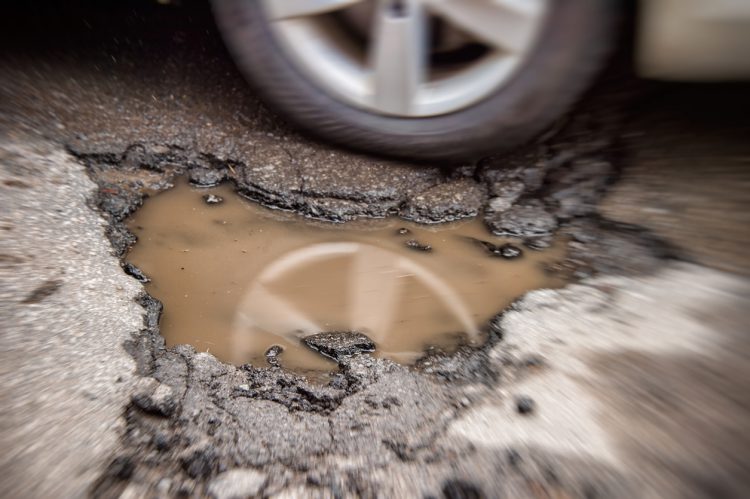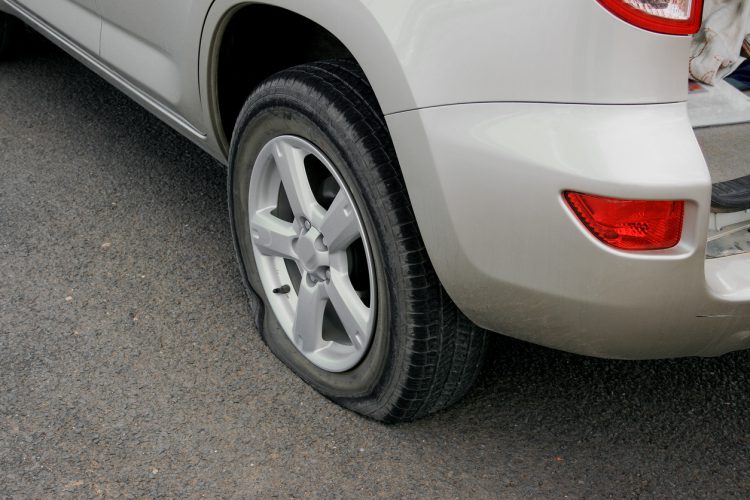
Now’s the time of year when the number of potholes on our roads starts to increase. Winter weather with its extreme temperature variations along with heavy rain and sometimes snow results in more damage to road surfaces. And more holes mean the greater chance that you’ll drive through one and suffer pothole damage to your car in one way or another.
So I thought it would be the perfect time of year to look at pothole damage and what we as drivers can do to spot and limit the effects of it.
Tyre damage is easy to see
When you hit a pothole, the first thing to bear the brunt is the tyre. The sudden dip in the ground can cause the tyre’s sidewall to get trapped between the wheel rim and the road. This is what’s known as a rim pinch and it damages the metal cords and fabrics that make up the tyre’s internal structure.
The result is a weakness in the tyre which enables the air inside to push out, forming a bulge in the tyre sidewall. These bulges are MOT failures because they can result in the tyre suddenly deflating or blowing out.
They’re easy to spot on the outer edges. But remember to check the inner edges too, which will require a torch and looking under the car.
Pothole damage can be expensive to fix
Increasingly, cars have low-profile tyres which means there’s less sidewall to absorb the impact from hitting a pothole. This can result in wheel damage as it feels the full force of the hit.
Depending on what the wheel is made of and how it’s built, it might either bend or crack. Cracks in the wheel can cause tyres to deflate, depending on how bad they are.
If you do see a crack in your wheel, seek professional help. Sometimes cracked wheels can be fixed; sometimes they need replacing. One thing’s for sure: it’s not going to get any better.
Forged magnesium wheels are more likely to bend. Unfortunately, a bent wheel can’t really be straightened so you need an expert to make the call.

Hitting a hole can put your wheels out of alignment
Wheel alignment is quite a delicate adjustment and hitting a pothole can throw it out. Wheels might lean in or out at the top and the bottom on the vertical plane and in towards or away from the car on the horizontal axis.
Wheels that are out of alignment can result in increased tyre wear and in extreme cases cause the car to pull one way or the other.
Suspension damage can be expensive
Suspension parts have to put up with a lot of abuse, most of which they’re designed to sail through undamaged. But hitting potholes can subject them to the sort of forces that they succumb to. Track rod ends, wishbones and springs can all be bent or broken when you hit a pothole.
How can you tell? Well, often the car will no longer iron out bumps as smoothly as it used to. You may hear a creaking noise as you drive over speed bumps. You might notice your tyres wearing unevenly or notice your car bouncing more when you stop. If you experience any of these symptoms, I’d advise you to get your car checked out by a professional.
One thing’s for sure, if you leave it, you won’t save any money. And it might actually cost you more in the long run. That’s because pothole damage always puts undue stress on other components and causes them to wear out faster.
By John Price, a member of Green Flag’s automotive technical support team
Why when I called Greenflag recently did they say I was not covered for this
Potholes can cause serious damage to vehicles, leading to costly repairs! Regular maintenance and cautious driving can help minimize the impact. Great insights in this blog!